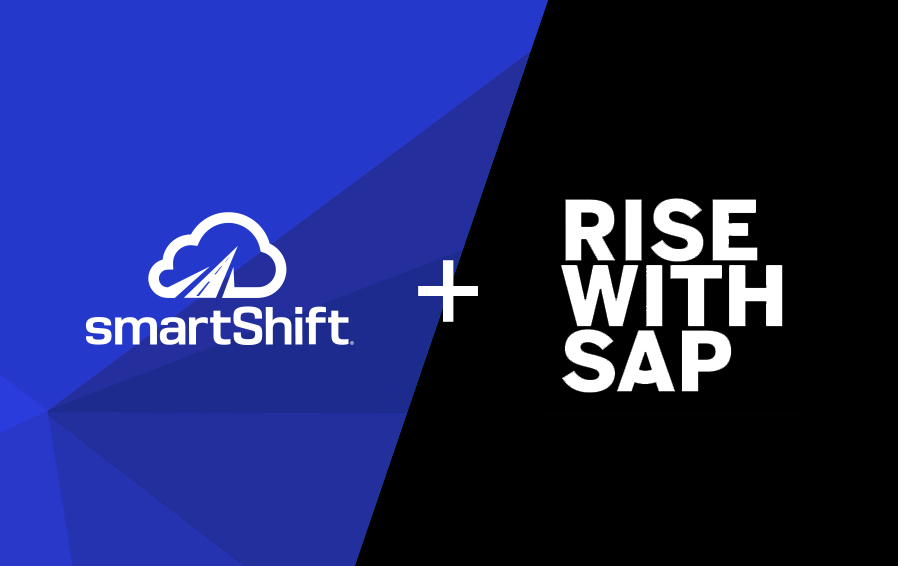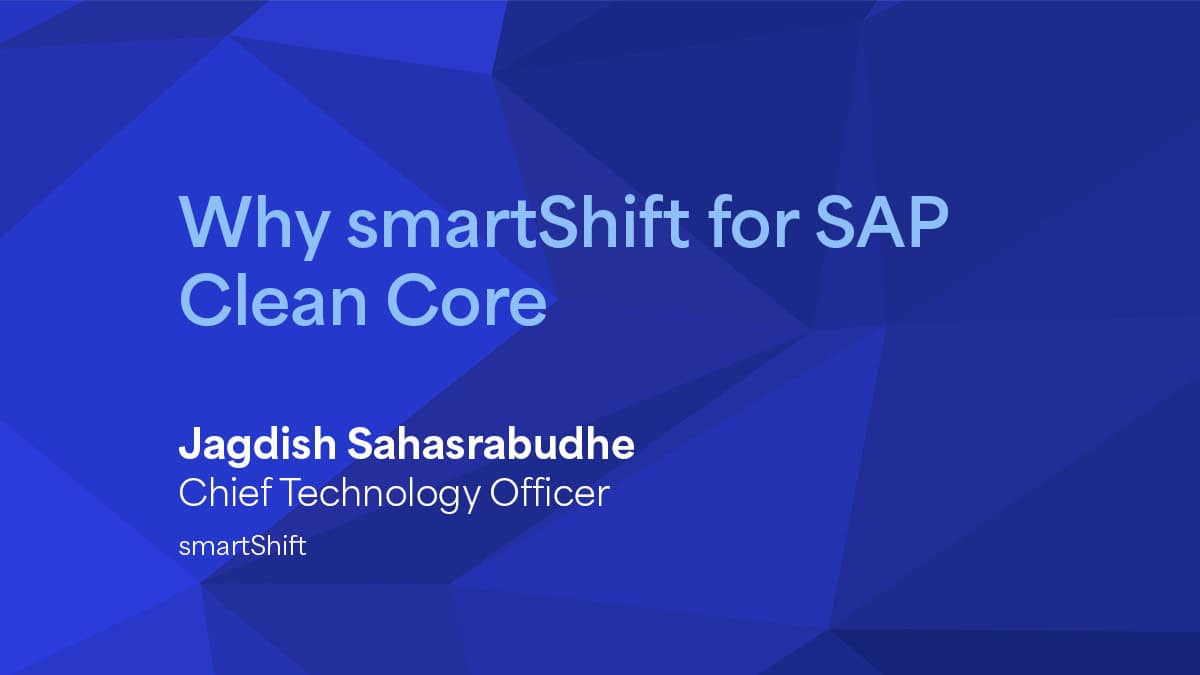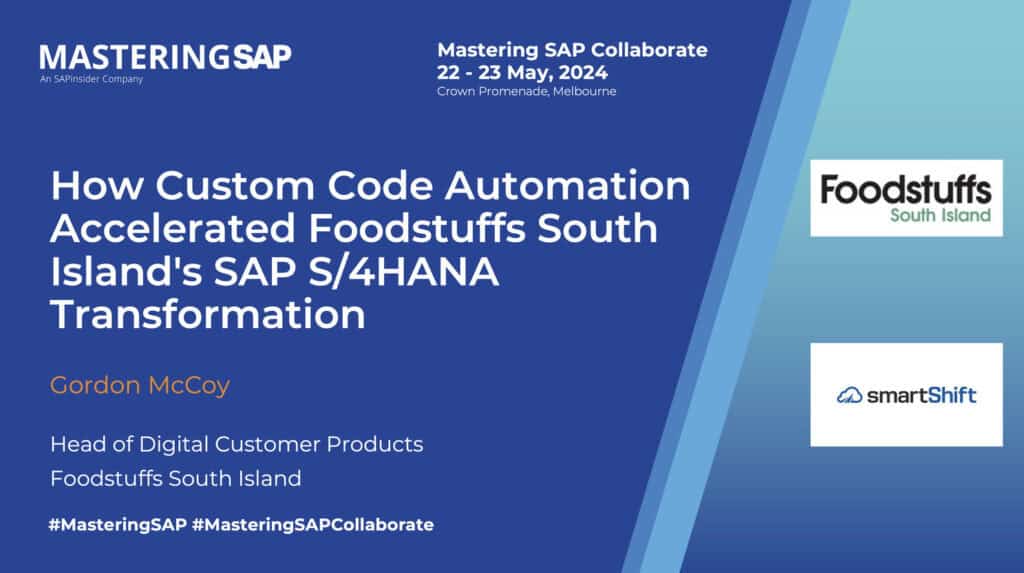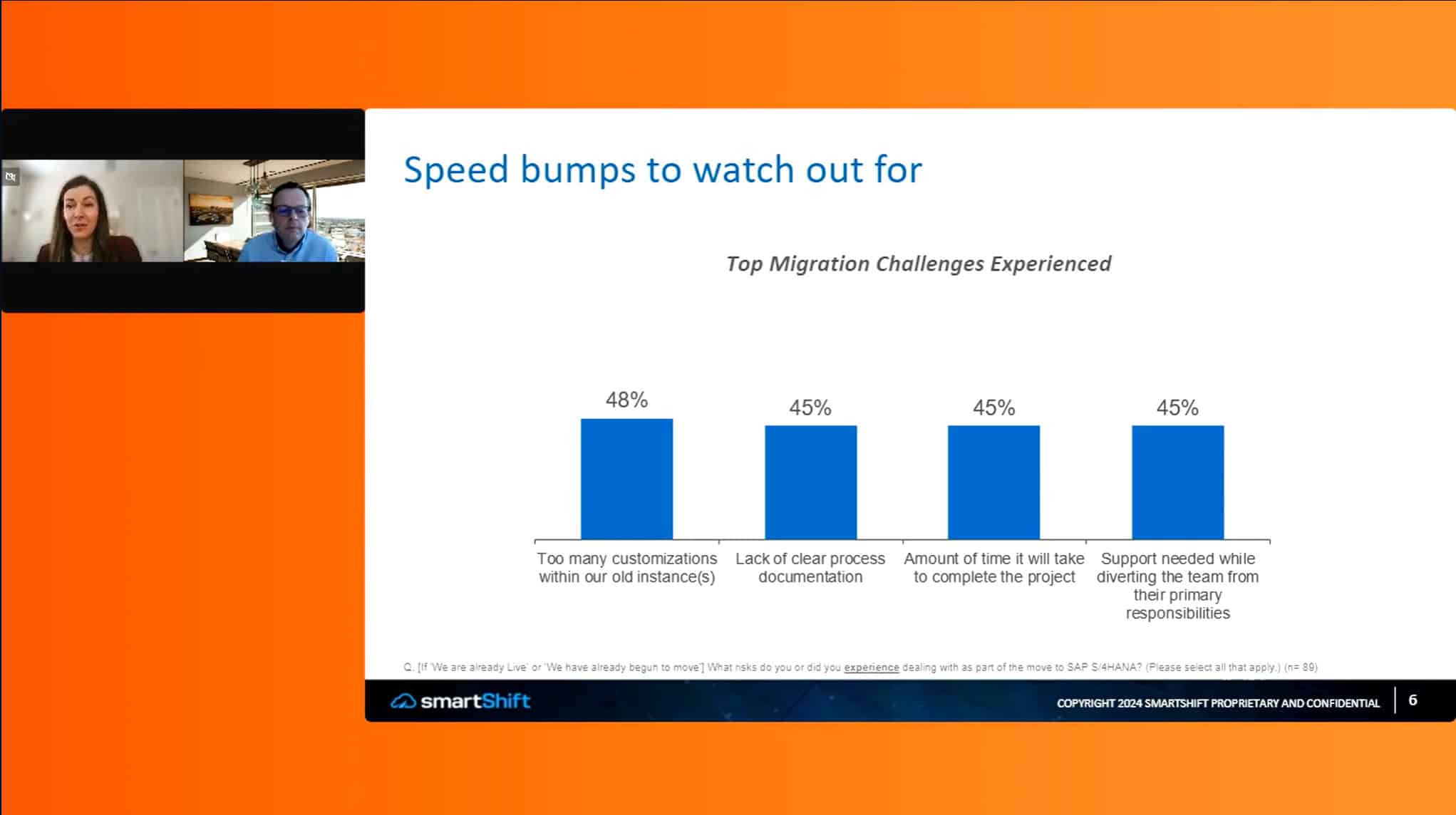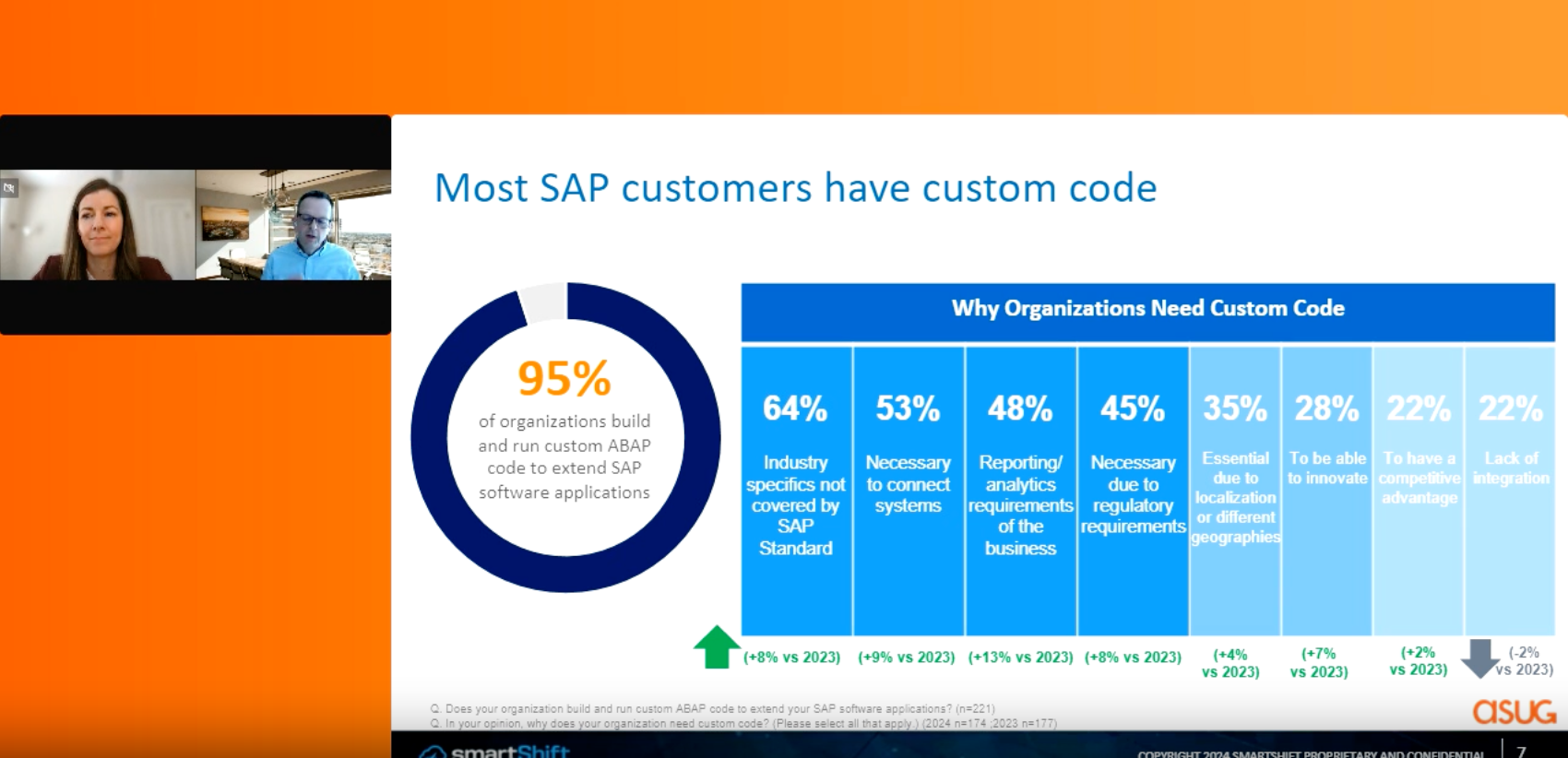8 Essential Questions That Help Business & IT Leaders Ensure a Successful Transformation
October 6th, 2025
4 min read
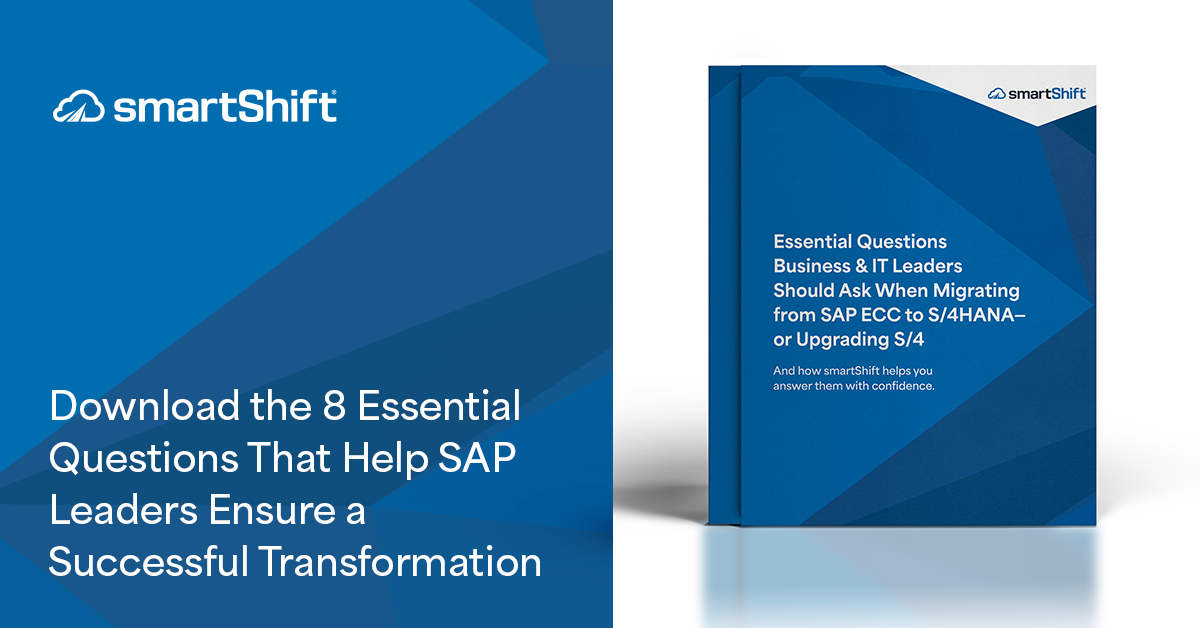
Why Asking the Right Questions Matters in SAP Transformations
Moving from SAP ECC to S/4HANA—or upgrading between S/4HANA versions—is one of the most consequential moves an enterprise can make. The difference between success and failure often comes down to the questions you ask your partners before the work begins.
These questions are not for your internal IT team alone. They should be posed directly to the system integrators, SAP, or ecosystem partners who will guide your transformation. Their answers reveal whether they can deliver with confidence—or if risks are being overlooked.
This blog highlights eight essential questions every Business or IT leader should ask of potential partners, with context on why each matters, what to look for in responses, and how smartShift provides proven answers.
1. How Will Custom Code Be Analyzed and Addressed?
Custom code is at the heart of every SAP system. But outdated, unoptimized, or incompatible code is the single biggest risk factor in any transformation. If it’s not analyzed thoroughly, you risk downtime, hidden defects, and costly fixes later.
- Who to ask: Your system integrator or any partner responsible for managing the technical cutover.
- What to ask: What tools and methodologies are used to identify, optimize, and adapt custom code to the latest S/4HANA release?
- What to look for: Comprehensive automated analysis across the entire codebase, not selective manual reviews.
- smartShift Advantage: Patented automation analyzes and transforms millions of lines of code with unmatched precision, ensuring compliance and compatibility at scale.
2. How Do You Minimize Business Disruption?
For business leaders, the greatest fear of any SAP transformation is downtime. Even short disruptions can ripple across finance, supply chain, and customer operations. The right partner must prove they can keep the business running without interruption.
- Who to ask: Partners managing project timelines and cutover planning.
- What to ask: What’s your track record in maintaining operational continuity during SAP transformations?
- What to look for: Evidence of accelerated testing, shorter cutovers, and solutions for synchronizing ECC and S/4HANA environments.
- smartShift Advantage: Dual Maintenance keeps ECC and S/4HANA in sync—no freezes, no divergence, no disruption.
3. How Will Technical Debt Be Managed?
Every SAP landscape carries technical debt—legacy code, obsolete customizations, and outdated practices. If it isn’t addressed during transformation, that debt multiplies and makes future upgrades even harder.
- Who to ask: Partners overseeing code remediation and modernization.
- What to ask: Do you simply remediate code, or do you also modernize it and retire obsolete objects?
- What to look for: Refactoring to SAP best practices and automated decommissioning of unused code.
- smartShift Advantage: We refactor legacy custom code to modern standards and identify unused or obsolete code to safely retire—reducing long-term complexity and costs.
4. How Do You Handle Regulatory and Compliance Requirements During the Transformation or Upgrade?
Compliance is non-negotiable. Every industry and geography comes with its own regulations, and a transformation that fails to meet those requirements can expose your business to fines, delays, or reputational risk.
- Who to ask: Partners responsible for system governance, quality assurance, or compliance oversight.
- What to ask: How do you ensure our system continues to meet industry-specific compliance requirements post-transformation or upgrade?
- What to look for: Automated validation processes and documentation that align with compliance standards in regulated industries such as Pharma.
- smartShift Advantage: Our solutions support compliance in regulated industries like pharmaceuticals by applying automated checks and validations to ensure code meets required standards post-transformation.
5. How Do You Provide Visibility and Documentation for Custom Code?
One of the biggest challenges in SAP landscapes is lack of visibility into custom code. Many organizations don’t know what they have, how much is in use, or where the risks sit. Even more challenging, documentation is often outdated or missing altogether. This lack of clarity slows transformations, increases testing effort, and creates long-term risk.
- Who to ask: Partners responsible for custom code analysis, remediation, and modernization.
- What to ask: How do you provide a complete view of our custom code—including inventory, usage, risk rating, and documentation status—before and during transformation?
- What to look for: Automated analysis that delivers a full map of the codebase, identifies optimization opportunities, and fills documentation gaps. Bonus points if the solution generates clear reports for both IT and business leaders.
- smartShift Advantage: smartShift delivers full visibility with automated mapping, usage tracking, and risk scoring. We auto-generate missing documentation, filling gaps that often paralyze IT teams. In M&A or divestiture scenarios, our automation can reconcile code across merged or split systems—ensuring nothing is missed and every decision is made with confidence.
6. How Do You Ensure Timelines and Costs Stay Predictable in Custom Code Remediation?
Transformations are notorious for running over schedule and budget, and custom code is often the hidden culprit. Manual remediation adds uncertainty and drains resources. Leaders need confidence that custom code remediation won’t derail the broader program.
- Who to ask: System integrators or partners responsible for custom code remediation.
- What to ask: How do you ensure the analysis and transformation of custom code stays on a fixed timeline and within budget?
- What to look for: Automated processes with guaranteed delivery dates and cost structures—not “best effort” estimates.
- smartShift Advantage: Our automation delivers fixed-price, fixed-timeline custom code remediation. By removing manual effort, we eliminate the hidden risks that lead to overruns.
7. How Do You Measure ROI from Custom Code Modernization?
When evaluating ROI, many leaders focus only on the overall transformation. But custom code itself has a direct, measurable impact on upgrade readiness, testing effort, and operational stability. If left unmanaged, it erodes value over time.
- Who to ask: Partners providing custom code remediation or modernization services.
- What to ask: How do you demonstrate the business value created specifically through custom code modernization?
- What to look for: Metrics tied to reduced testing effort, fewer defects, faster upgrade cycles, and lower long-term maintenance costs.
- smartShift Advantage: By fixing all issues (P1–P4) in one automated pass, we reduce testing effort, eliminate regression risk, and future-proof your SAP landscape. The ROI is immediate and long-lasting.
8. Do You Fix All Custom Code Issues or Just the Critical Ones?
Some partners only remediate the most urgent issues—typically P1 and P2—leaving thousands of lower-priority issues unresolved. Those issues may not block go-live but often cause instability, performance degradation, or costly future fixes.
- Who to ask: Partners responsible for code remediation.
- What to ask: Do you resolve all issues—including P3 and P4—or just enough to get to go-live?
- What to look for: Comprehensive remediation that modernizes the entire codebase, not selective patching.
- smartShift Advantage: We fix all issues—P1 through P4—in one automated pass, ensuring your code is fully modernized, stable, and compliant.
Common Pitfalls to Watch For
- Partial fixes: Only addressing critical issues leaves hidden instability.
- Manual remediation: Slows delivery and introduces human error.
- No guarantees: “Best effort” approaches lead to overruns.
- Lack of visibility: Without mapping and documentation, leaders can’t make confident decisions.
The Bottom Line
These eight questions are a litmus test for the partners you trust with your SAP journey. They separate vendors who can deliver predictable, future-ready results from those who rely on manual fixes and guesswork.
By asking the right questions of your system integrators, SAP contacts, and ecosystem providers, you avoid costly mistakes, reduce risk, and build a modern SAP core designed for long-term agility.
As the Chief Technology Officer at smartShift, he brings over 25 years of experience in product strategy, SAP applications, and enterprise AI. Previously, he served as SAP's field CTO, where he worked with ISVs and channel partners to align complex technologies with market needs. He has earned multiple accolades, including the SAP Innovation Award (2005). His leadership roles across startups and large enterprises, along with recognition such as the Zinnov Start-up Beacon Award (2014), uniquely position him to drive innovation and growth at smartShift.



